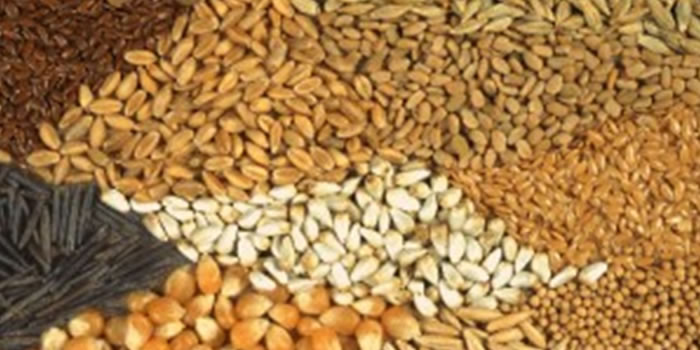

Commerce, Trade And Industry Characteristics
Elmina, as the first point of contact of the country with the outside world, took the centre stage in trade and commerce during the pre-colonial era, including the period of the Slave Trade. Though Elmina is no longer a centre of trade (import and export), as far as national and international trade is concerned, it plays significant role in commerce and trade in the areas of fish and salt. Traders from within and outside the KEEA Municipality come to Elmina to purchase fish and salt for consumption and sale in other markets in the country or export them to other countries in West Africa.
Although the public sector is the main formal employer within Elmina, construction, retailing, small-scale manufacturing, agro-processing (food and fish) and service activities are the major sources of informal employment. Over fifty percent (50%) of the work force in the urban area get their employment outside the formal economy, while a large proportion manage to find employment in both sectors at the same time. Small shop keepers, street vendors, taxi/bus drivers and food sellers are common sight in the streets of Elmina, and make a major contribution to the economy of the town.
There are few major industrial concerns in the Elmina town. Assorted light manufacturing activities take place in the township of Elmina. These are in the areas of batik, tie-and-dye making, and the production of drinking water in sachets. Employment in the industrial sector is therefore limited. The KEEA District Municipal Assembly is encouraging the private sector to set up industries in Elmina. The Assembly is also making efforts to set up a craft village in Elmina to boost tourism as well as create employment and add value to products.
Future potential industries include processing industries such as fish and salt. Canoe and boat building and repair are a thriving industry in Elmina. Canoes of different sizes are built on the beach and along the Benya Lagoon. The boat builders have their wharf adjacent to the fish landing area in Mbofren, on the lagoon. The boats built are of wood and of different types, but are all fishing vessels. A high level of craftsmanship and simple technology marks the industry.
The Need For Land, Services, And Communication Facilities
For commerce, trade and industry to flourish, there is the need for well-developed infrastructure in the form of water supply, electricity, telephone facilities and other services. Water supply and telephone facilities are at the moment inadequate and services are poor and need serious improvement.Telephone facilities in the KEEA Municipality are woefully inadequate and the services are very poor. These facilities need to be improved. Commerce and trade only have limited quantitative demand for land but need "high quality" areas for their activities.
Most of the activities are concentrated in and around the Chapel Square and along the main streets.Suitable land for shops, restaurants, markets and also for more informal sector activities have become increasingly scarce. The land was not properly managed and this has resulted in an uncontrolled growth of the informal trade (carried out in kiosks, food, electrical and provision shops) that hinder the proper development and environmental management of the inner city.
Low Industrial Development
Elmina is not well endowed as far as industrial development is concerned. The fishing and salt mining activities are underdeveloped so as to offer gainful employment or produce value-added products for the market. Products from these two important sectors are in their raw or semi-raw state.In effect, no factories or manufacturing concerns have been established in Elmina to process products of these sectors. Thus prices of products are unstable and low. Employment in the industrial sector is limited and at best seasonal. Please refer to Map 2.2 offering more information on economic development in Elmina.
The ship building industry caters for the national and even international markets, with buyers coming from as far as Ivory Coast and Togo. The shipyards currently build about twenty-five to thirty boats per annum. Apart from new vessels, the shipyards repair and rebuild old vessels.The industry delivers a finished product according to set specifications. In general, the buyer provides for the materials needed, and the ships’ carpenters and other craftsmen only claim building costs (salary).
Opinions about the current state of the industry vary. From ad-hoc interviews it seems as if the demand for new fishing vessels has grown in the last couple of years.However, local informants also point towards a booming period in the early 1980s, which was not regained since. The low technological level of the industry leaves room for general improvements and greater efficiency in the building process, which may also lead to further development of the industry.
Impact Of Industry, Commerce And Trade On Environment
The impact of industry, commerce, and trade on the environment does not seem to be of any significant magnitude. However, the numerous kiosks and other structures put up for commercial purposes are constructed in a haphazard manner.This causes congestion and impedes the smooth flow of air into residential houses. This can lead to respiratory diseases, especially in areas where kiosks are heavily clustered. With the clustering of kiosks the human pressure on the environment also increases, in terms of pollution, structural damage, and fire hazards.
The latter is especially true in cases where kiosks are built against old buildings. In the last year, two 19th century buildings of cultural heritage significance got burnt down and collapsed, because the fire started in adjacent kiosks where flammable goods were stored. More generally, kiosks block the streets and walkways, causing congestion and dangerous situations for pedestrians. The structures also limit the view of many of the monumental streetscapes with old merchant houses, devaluing the historic and tourist potential of the town.
The ship building industry on the Benya Lagoon has a direct impact on the environment. The shipyards dump most of the wood remains from the production process into the lagoon, where it adds to the silting. Remains and spill of tar, used to make the boats’ watertight, also end up in the lagoon, and eventually in the sea and on the beaches. Part of the pollution problem stems from the cramped working conditions in the shipyards There is hardly any room for storage of waste.
Mining
Informal Mining Of Sand, Stones And Clay
Mining activities are taking place in Elmina in an informal manner and can be classified as illegal - or what is popularly referred to as "Galamsey" - mostly by the inhabitants of the town. Several mining sites can be identified in Elmina. Sand winning is done along the beaches and the river banks, beds, sites for stone and clay can also be located in the township especially at the foot of the three hills.There are various methods adopted by those involved in these illegal activities in order to outwit the authorities that are supposed to regulate their activities.
Especially for sand winning at the beaches since it is entirely banned, their mode of operation ranges from making blocks at the beach to transporting the sand in small quantities in sacks or head pans mostly in the night and at dawn (early hours of the morning) but also in trucks.The fine of 120,000 per truckload does not seem to stop the perpetrators from mining. Stone and clay on the other hand are mined without fear, even though such activities need to be registered and controlled and sometimes can damage structures and monuments.
The miners/winners mostly use these substances for constructional purposes within the Elmina town and at times sell them to people in the surrounding towns. Sand is used for making sandcrate blocks, mortar, and stone for concrete to use in building. Clay is normally used to construct ovens for fish processing and smoking. Stone quarrying is done at Ayisa / K’Burano.
Salt Mining And Winning In Elmina
Salt mining and winning is identified to be one of the main commercial ventures in Elmina, but this activity cannot be said to be on a very large scale now. Currently there is some amount of salt winning activity in the township of Elmina. Benya Lagoon is one of the known and significant sites for salt winning in the town. Other minor salt winning sites of little or no commercial values can however, be located within the town.
Certain companies tried salt winning around the Sweet and Kakum Rivers by pumping seawater to the areas around the rivers, but this was discontinued. Salt winning in the Benya Lagoon has led to a depletion of the mangrove swamps, and the natural functions of these areas.
Mining And Environment (Land Degradation)
Although sand mining only takes place on a limited scale, the impact on the environment is considered a major problem. Sand winning along the beaches is causing sea erosion of the shoreline in areas where this illegal activity is undertaken, posing serious threats to vital installations.For example, the main Cape Coast-Takoradi Highway at Iture, Elmina Beach Resort, the road from Elmina Beach Resort to the Elmina Castle and some houses along the coast, especially from the Castle area towards the Coconut Grove Hotel are damaged. Some buildings are under serious threat and measures should be taken as soon as possible.
Environmental problems associated with mining, which also occur in the Elmina area include loss of vegetation cover and biodiversity, and the accumulation of water in deep cavities left behind by mining. The latter turn into breeding grounds for insects (i.e. mosquitoes) and shelters for reptiles during the rainy season, and can cause a public health nuisance. Also this water filled cavities may serve as possible death trap or may cause injuries to both humans and animals that may fall into them.
Flooding of river banks is another problem associated with sand winning in river beds and along their banks. This problem can also cause displacement of people living close to the surface water bodies and rivers. There is also the danger of destruction of the natural habitat and breeding grounds for aquatic flora and fauna, leading to reduction in aquatic life due to sand winning in the water bodies.Stone and clay mining also have a negative environmental impact similar to that of sand winning. These activities also leave deep cavities behind and create ponds or pools of water in the rainy season, with its associated problems as enumerated above.
Stone and clay mining can be found in areas close to the fish market and the Governor’s Palace respectively.Another example is the buildings on all three hills of Elmina. Fort Coenraadsburg (Jago Hill) and St. Joseph Church are under serious threat of erosion as well as several buildings on Java Hill. Fort Coenraadsburg in particular is under threat from erosion as a direct result of winning of clay by the residents who live around the hill.Even though mining activities in Elmina are generally small scale in nature, the cumulative effect on the environment is considerable.
The (legitimate) miners and winners need to register such ventures with the appropriate authorities (EPA, Mines Department and District Assembly) for constant and regular monitoring to be undertaken at the sites, in order to prevent any adverse environmental impacts.Although salt mining does not have a direct impact on the environment, it seems that the increasing number of sites has an impact on the river flow and the movement of the sea increasing the risk on flooding (congestion of water ways) and increasing siltation (the sea has a more limited area where it can dispose its sand)Elmina.
Date Created : 11/21/2017 5:24:14 AM








 facebook
facebook
 twitter
twitter
 Youtube
Youtube
 +233 593 831 280
+233 593 831 280 0800 430 430
0800 430 430 GPS: GE-231-4383
GPS: GE-231-4383 info@ghanadistricts.com
info@ghanadistricts.com Box GP1044, Accra, Ghana
Box GP1044, Accra, Ghana